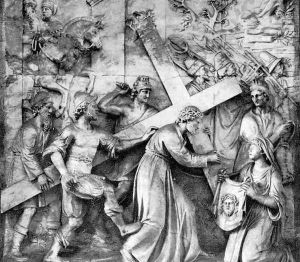Cornelis Floris Paintings
Cornelis Floris de Vriendt, born in 1514 in Antwerp, was a pivotal figure in the Northern Renaissance, especially renowned for his contributions to architecture, sculpture, and engraving. Coming from a family deeply involved in the arts—his brother Frans Floris was a prominent painter—Cornelis's artistic journey was influenced by the cultural vibrancy of Antwerp, a leading art center of the time. His education and early career were marked by an extensive tour of Italy, a common practice among artists of the period seeking inspiration and knowledge from the Renaissance's heartland. This experience profoundly influenced Floris's artistic vision, blending Italian Renaissance ideals with Northern European traditions.
Upon his return to Antwerp, Cornelis Floris became a central figure in the city's artistic life, taking on major architectural and sculptural projects. He was appointed the city architect of Antwerp, a position through which he left a lasting impact on the city's architectural landscape. One of his most significant contributions was the design of the Antwerp City Hall, a masterpiece that stands as a testament to the fusion of Renaissance and Mannerist architectural styles. This building not only demonstrated his innovative approach to architecture but also set a new standard for civic buildings in the Low Countries.
Floris's work in sculpture, especially in tomb monuments, was equally groundbreaking. His designs often incorporated elaborate details and dynamic compositions, reflecting the Mannerist style's complexity and elegance. Through these works, he significantly influenced the development of sculpture in the region, inspiring a generation of artists with his expressive forms and intricate designs.
Despite his profound impact on Northern Renaissance art, Cornelis Floris's contributions have not always received the recognition they deserve in the broader narrative of European art history. Nevertheless, his legacy endures through his architectural and sculptural works, which continue to captivate and inspire. Floris died in 1575, leaving behind a body of work that embodies the richness and diversity of 16th-century European art, blending the classical ideals of the Renaissance with the innovative spirit of the North.
